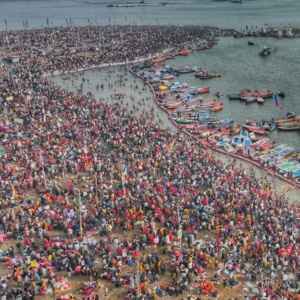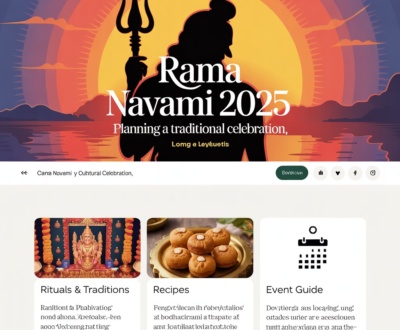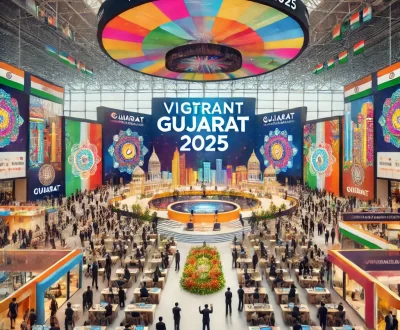Event Management of Maha Kumbh Mela 2025: A Grand Organizational Marvel
- March 26, 2025
- Event

Event Management of Maha Kumbh Mela 2025
The Maha Kumbh Mela is one of the largest religious gatherings in the world, held every 12 years at Prayagraj (formerly Allahabad), India. In 2025, millions of devotees, sadhus, and tourists from across the globe are expected to participate in this spiritual spectacle. Managing such a massive event requires intricate planning, efficient coordination, and advanced technology to ensure safety, security, and seamless operations.
This blog explores the event management strategies involved in organizing the Maha Kumbh Mela 2025, covering crowd control, infrastructure, security, sanitation, and digital integration.
Historical Significance of Maha Kumbh Mela
Maha Kumbh Mela has been celebrated for centuries and holds immense religious significance. Devotees believe that bathing in the holy rivers during this festival purifies the soul and leads to salvation. The event is held at four locations: Prayagraj, Haridwar, Ujjain, and Nashik, with the Maha Kumbh occurring exclusively at Prayagraj every 12 years.
The 2025 Maha Kumbh Mela will witness an estimated 100 to 150 million pilgrims gathering at the sacred confluence of the Ganga, Yamuna, and the mythical Saraswati rivers.
Challenges in Managing Maha Kumbh Mela
Organizing such a colossal event comes with numerous challenges:
Massive Crowd Management: Ensuring the safety and smooth movement of millions of people.
Security Concerns: Preventing stampedes, terrorist threats, and crime.
Sanitation and Waste Management: Maintaining hygiene for such a vast population.
Traffic and Transportation: Efficient transportation for devotees, VIPs, and international visitors.
Accommodation and Food Supply: Setting up temporary shelters and ensuring food distribution.
Environmental Concerns: Reducing pollution and managing waste effectively.
Event Planning and Infrastructure Development
1. Smart City Planning
The government and event organizers have planned a temporary smart city with well-defined sectors, roads, and facilities. These include:
Temporary tent cities for accommodation.
Dedicated bathing ghats for devotees.
Medical camps and emergency response centers.
Command and control centers equipped with CCTV surveillance.
2. Crowd Control and Safety Measures
AI-Based Crowd Monitoring: Advanced technology helps track and manage crowds, alerting authorities to potential congestion.
Drones for Surveillance: Security drones provide aerial monitoring and real-time updates.
RFID Wristbands for Pilgrims: To track lost individuals and ensure efficient crowd movement.
Barricading and Exit Routes: Designated entry and exit points to prevent stampedes.
3. Security Management
With millions of visitors, security is a top priority. Measures include:
Deployment of Police and Paramilitary Forces: Thousands of security personnel will be stationed across the venue.
Facial Recognition Technology: Helps identify potential threats and missing persons.
Terrorism Threat Mitigation: Anti-terror squads and bomb disposal units will be deployed.
Strict Entry Regulations: RFID-enabled entry passes for restricted areas.
Sanitation and Waste Management
Maintaining hygiene at such a large event is critical. Key strategies include:
Installation of Bio-Toilets: Reducing open defecation and ensuring proper waste disposal.
24/7 Waste Collection and Recycling: Teams dedicated to managing waste efficiently.
Use of Eco-Friendly Materials: Banning plastic and promoting biodegradable materials.
Awareness Campaigns: Educating pilgrims on cleanliness through digital displays and volunteers.
Transportation and Logistics
Efficient transport systems are crucial for handling the influx of pilgrims. Measures include:
Dedicated Transport Corridors: Special roads for buses, emergency vehicles, and VIP transport.
Shuttle Services: Free shuttle services from railway stations and airports.
Helicopter Services: For emergency evacuations and VIP transportation.
Real-Time Traffic Monitoring: AI-powered traffic management for smooth movement.
Digital Integration and Smart Management
Technology plays a vital role in managing Maha Kumbh Mela 2025 efficiently.
Mobile Apps for Pilgrims: Providing real-time updates, maps, and emergency contacts.
AI-Powered Help Desks: Offering multilingual support for tourists and pilgrims.
Virtual Queue Systems: Reducing overcrowding at ghats and temples.
Live Streaming: Allowing devotees worldwide to participate virtually.
Accommodation and Hospitality
Providing shelter and food for millions is a monumental task. Steps include:
Temporary Tent Cities: Equipped with basic amenities for pilgrims.
Affordable Dharamshalas and Hotels: Managed by private and government sectors.
Langars and Community Kitchens: Serving free meals to lakhs of devotees daily.
Economic and Cultural Impact
The Maha Kumbh Mela plays a vital role in stimulating the local economy through:
Tourism Growth: Hotels, transport, and businesses thrive during the event.
Employment Generation: Thousands of temporary jobs in security, hospitality, and transport.
Promotion of Indian Culture: Showcasing India’s rich heritage, traditions, and rituals.
Conclusion
The Maha Kumbh Mela 2025 is not just a religious event but a testament to India’s exceptional event management capabilities. Through strategic planning, modern technology, and an unwavering commitment to safety and sustainability, the government and event organizers aim to make this Kumbh Mela a seamless and spiritually enriching experience.
Managing an event of such magnitude requires collective effort from government agencies, private organizations, volunteers, and the general public. With meticulous planning and advanced technology, Maha Kumbh Mela 2025 is set to be a historic and well-organized spiritual gathering
Subscribe to our newsletter!
More from our blog
See all postsRecent Posts
- How Indian Families Celebrate Anniversaries in Style May 28, 2025
- Rama Navami 2025: Planning a Traditional Celebration April 7, 2025
- Event Management of Maha Kumbh Mela 2025: A Grand Organizational Marvel March 26, 2025








